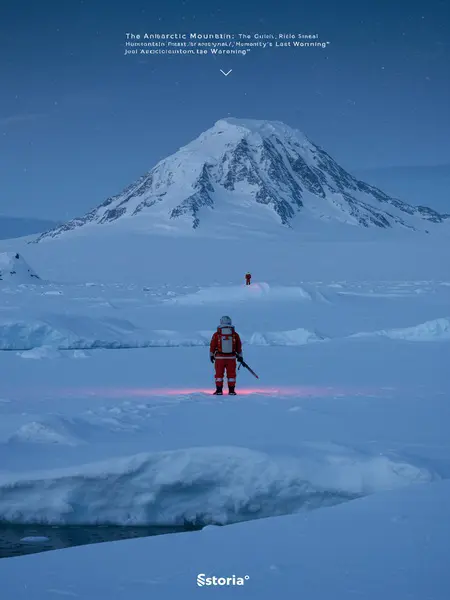Chapter 5: Samudra Shakti
A few hours later, our bus reached Warrnambool Port.
A dozen or so buses lined up, and experts and security teams from various countries disembarked and boarded a research vessel:
The Samudra Shakti 2, 122.5 metres long and 22.32 metres wide—India’s first domestically built polar research vessel.
She was a proud sight, painted with the tricolour, the name ‘Samudra Shakti 2’ glinting in bold Devanagari on her hull. Some of us paused to take selfies, the Indian flag fluttering bravely against the bitter wind. Before boarding, a few of us did a quick prayer—touching the ship’s hull for good luck, murmuring, "Jai Mata Di," as is tradition for any new journey.
After the quake, massive glaciers in the Antarctic Circle had collapsed, so we needed the Samudra Shakti 2 to break through the ice to reach the pole.
The engineers, mostly from Chennai and Visakhapatnam, checked and rechecked every nut and bolt, their faces tense but determined. “Don’t worry, sir, Indian jugad will see us through,” one of them assured me, patting the railing.
In the meeting room, over a hundred experts had gathered.
It was like a mini-United Nations. Snippets of Bengali, Tamil, Hindi, Russian, Spanish, even Japanese floated around the room as everyone settled in with cups of coffee and plates of idli-sambar from the canteen. Someone tried to smuggle achaar in their luggage, and now half the room smelled like home.
An elderly Argentine expert took the stage, his heavy Latin American accent filling the room:
"The 11·11 Antarctic earthquake registered a surface-wave magnitude of 12.0 Ms and a moment magnitude of 12.4 Mw.
"Seismic stations in multiple countries recorded the waves. By calculating the time differences, we confirmed the epicentre was at the Antarctic Pole."
Though most experts already knew this, the room erupted in shocked discussion.
Someone at the back murmured, “Bhagwan hi jaane ab kya hoga.”
As everyone knows, earthquakes are vibrations caused by the release of energy in the Earth’s crust.
According to their causes, earthquakes are usually classified as tectonic, volcanic, collapse, induced, or artificial.
The most common are tectonic earthquakes, caused by plates squeezing and colliding, creating faults and ruptures.
Back in 2020, King George Island at the edge of the Antarctic Plate experienced a sustained volcanic earthquake:
Over four months, King George Island endured 85,000 quakes, and the island itself shifted by ten centimetres.
Experts determined this was caused by the eruption of the Orca seamount at the bottom of the Bransfield Strait.
But... the Antarctic Pole sits in the middle of the plate.
There are no plate collisions, no volcanoes, no underground caverns, no mining, and certainly no intelligent beings down there making earthquakes.
A Bengali professor, her sari sleeves rolled up, whispered, “Toh phir yeh sab ho kya raha hai?”
The Argentine expert played the next set of data, revealing another mystery:
"According to our computer models, the preliminary focal depth is 700 kilometres."
The murmurs grew. No one in the room could quite process what that number meant.













